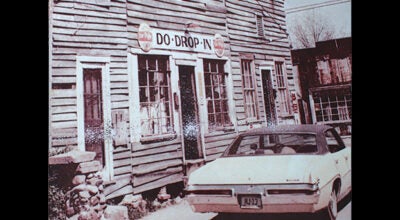Wright Flight takes off
Published 8:58 pm Saturday, March 31, 2012

Matthew Barnes gears up for his trip into the wild blue yonder with the help of pilot Wes Banks. Matthew was one of 160 fifth-graders participating in the Wright Flight program this year, in which students set academic goals for themselves. Their reward if they meet their goals: a flight of their own, provided by volunteer pilots like Banks. (WDN Photo/Vail Stewart Rumley)
Fifth-graders soar as a reward for setting, achieving goals
“Oh, Lord,” Missy Gamble said nervously as the pilot told her to step on the wing to get into the four-seater plane. Beside her, her 10-year-old son Matthew Barnes vibrated with excitement. The two were going flying, courtesy — not of a purchased ticket — but of the hard work and perseverance it took for Matthew to achieve his Wright Flight goals. His mom was his guest passenger.
For nine weeks, John Small Elementary School fifth-graders plunge into aviation, its history, impact, and mechanics, from the Wright brothers to the space shuttle, as part of Wright Flight, a program designed to teach children the value of setting goals for themselves.
Wright Flight goals involve tests: the kids are quizzed every week on what they’ve learned about aviation. They involve contracts: students pledge to raise their grade point average in a weak subject by seven points and must achieve it. The goals feature a final exam, in which each potential flyer must earn an 85-percent or better, because that’s what pilots must earn in order to get their pilot’s license. Even the straight-A students must go above and beyond to earn their wings.
Their contracts are written guarantee their grades will be maintained, in addition to having to take on an aviation-themed project.
“They have to jump through all sorts of hoops to get here today,” said Sherrie Swain, fifth grade teacher at John Small and Wright Flight coordinator for the school.
The “here” she spoke of was Warren Field, where Washington High School JROTC cadets directed traffic and opened doors for the constant flow of fifth-graders and their parents in and out of the airport’s small terminal. The day was Saturday — payoff day for the first round of Wright Flight participants who had achieved their goals.
The voices filling the terminal were young and excited, whether they belonged to those who’d just landed or those waiting to take off.
“It was awesome! We flew over John Small and my mom’s house. We got to see a lot of stuff,” said Chase Ambrose. Chase’s guests for the flight were his younger brother, Levi, and his father. Chase, who’d never flown before, said he was initially apprehensive but “after a little while, I thought ‘wow, this is really cool.’”
Chase and his family were escorted 1000 feet up in the air by one of the many pilots who volunteered for the event. The plane flew a wide circle: south toward the river, following the Pamlico east, curving around at Broad Creek to make the trek back the airfield.
“It’s very educational and enlightening,” said Jeremy Ambrose, Chase’s dad. “They get a different perspective on the world. This could be a career for them, if they like it enough.”
While flying is not a career for Wright Flight pilot Wayne Little, owner of Wayne’s Tree Service, it is an important part of his life. Little volunteered his time and plane for Saturday’s event, just as he did the weekend before for 151 local Boy Scouts getting their first taste of flying.
“I took my first flight at this airport when I was about their age,” said Little.
In flight, Little continued the aviation education the students had already received, describing to his passengers every aspect of what he was doing, from setting the trim before takeoff to rotating the nose as he touched down. His guest pilots were required to keep their hands on the yoke — flying themselves.
“We show them early that if they work hard and study, they can achieve whatever they want,” said Tom Saccio, who, with his late wife Sandy, was responsible for introducing Wright Flight at John Small.
The Saccios, retired to Beaufort County from New York City, worked for four years to get the program into the Beaufort County Schools. First, they were told by the school board to find a principal willing to take the risk, so they found one in then-principal of John Small, Lisa Tate. The Saccios were then told by Tate to find a teacher willing to teach the nine-week class, so they did in Mary Carter Taylor. The first year, one fifth grade class participated; the second, three classes. By the third year, all of John Small’s fifth graders were taking part. John Small has one of only two Wright Flight programs in North Carolina — the other, fittingly, at First Flight Elementary School in Kill Devil Hills.
According to Swain, the spike in the kids’ interest expands beyond the subject of aviation and spills over to their grades.
“It really gives them motivation to succeed,” she said.
For these fifth-graders taking their first flight on Saturday, success was motivated by setting goals, achieving goals, and the prospect of flight as a reward. For the Wright brothers, whose invention sparked an aviation revolution and changed the world, it was the same.





